|
McCloud Customers
Other Miscellaneous Shippers |
|
|
|
The other pages in this section deal with the principle shippers upon which the McCloud railroads relied upon for most of its livelihood. This page will profile the others miscellaneous shippers served by the railroad. Pacific Gas & Electric Company California utility giant Pacific Gas & Electric's first recorded use of the McCloud River Railroad was the Mt. Shasta Power Corporation hydroelectric projects along the Pit River, detailed in the Pit River Railroad page on this website. The next project occurred during World War II, when PG&E built the Pit 5 dam and powerhouse, followed in 1955 by the Pit 4 powerhouse. The utility established a large rail to truck reload and transfer station in Bartle for one of both of these projects. The next big project arrived in 1963 when PG&E drew up ambitious plans for two more powerhouses on the Pit River below Big Bend, designated the Pit 6 and Pit 7 projects. In order to make that project feasible the utility planned to divert water from the McCloud River to the Pit, which involved a large dam on the McCloud River six miles southeast of McCloud. The reservoir delivered water to the Pit via two lengthy stretches of aqueduct split by another intermediary reservoir. The McCloud River Railroad hauled many carloads of concrete and other construction materials into both McCloud and Burney for this project and drew up plans to build a branchline south of McCloud to the Lake McCloud dam site that never got built. McCloud River subsidiary McCloud River Trucking Company played a large part in delivering construction materials from the railheads to the project sites. The McCloud River Railroad handled traffic for two projects related to the "Gas" part of PG&E name, both major natural gas pipelines running from Canada south to the San Francisco area. PG&E built the first in 1960 and the second adjacent to the first in 1992. This project is dealt with on the Pipe Dreams page of this website. In addition to the major projects, PG&E also recieved on occassion special carloads, mostly large transformers, into Burney or McCloud. Lumber Mills The McCloud River Railroad handled traffic for a large number of lumber mills above and beyond the larger mills described in this section. Known mills also served by the company included: - The Ash Creek Mill, northeast of McCloud. The Siskiyou Lumber Company built the mill in 1891, and it operated sporadically until around 1895/1896. The Siskiyou Lumber & Mercantile bought the mill in 1896 and spun it off to the McCloud River Lumber Company upon its creation. McCloud River Lumber Company reopened the mill in late 1900 or early 1901, but it only operated until a fire destroyed the mill on 26 August 1903. - About six or seven small sawmills operated in the greater McCloud area in the years around 1897-1900, including one by the Warren & Anderson Company is Squaw Valley and then near Ash Creek; C.A. Hooper & Sons on the southeast flank of Signal Butte, operated roughly 1897-1899; Clark & Porter at Elk Lawn in 1898; John Vance operated one or two mills southeast of McCloud in roughly 1898-1901; and Crystal Springs Land & Lumber Company at Four Mile Flat around 1899. - John McKea operated several mills along the McCloud River in the years before the railroad arrived. He moved his mill east to Bartle around 1898, then in 1903 he incorporated the Esperanza Lumber & Timber Company that built a mill in Esperanza. The company failed during the financial panic of 1907, at which time the McCloud River Lumber Company bought the Esperanza company and closed the mill. - The William Westover Lumber Company built a mill on the banks of the McCloud River at Algomah in 1901. Around 1904 Westover leased the property to the Bridgeford-Cunningham Lumber Company, who in 1905 signed a contract with the McCloud River Lumber Company to operate some log trains on its behalf. Bridgeford- Cunningham brought a significant rate dispute case against the McCloud River Railroad in 1908 that resulted in significantly lower shipping rates, but the mill closed and moved to Montague, California, in 1909. - Algoma Lumber Company built a box factory adjacent to the Bridgeford-Cunningham mill in 1905 that purchased boards from B-C. This plant burned to the ground in 1909. - California Pine Box & Lumber Company operated a sawmill in Sisson/Mt. Shasta City that the railroad served from 1907 until 1939. - A small mill operated in Hambone near the old depot area for at least a short time in the later 1940s or early 1950s. - Cowning's Mill, a small stud mill, operated just east of the Pilgrim Creek Road crossing a few miles east of McCloud in the late 1950s or early 1960s. - In 1948, Oscar Peterson, Otto Vogt, and Chet Atkins formed the P.V.A. Lumber Company which purchased a small mill in Johnson Park built two years previously by "Pop" Johnson. The P.V.A. company operated for many years and shipped outbound lumber over the McCloud River, first through the Scott Lumber reload at Pondosa Upper Yard and then from a reload at the Burney yard. - Two small mills operated in the Burney Yard. Wood Products Manufacturing Company built the first mill shortly after the railroad arrived that produced mostly survey stakes until it burned on 29 March 1959, along with two flatcars spotted next to the plant for loading. Later that same year one Robert E. West leased the site, and together with Dan Heidinger built the West & Heidinger mill that converted end blocks from the Scott mill to toys. McCloud River handled both shipments, which lasted until the operation closed around the middle 1960s. Outbound Log Traffic McCloud River Railroad occassionally handled outbound log traffic for other companies. Recorded movements include: - Substantial cedar log shipments from multiple points between McCloud and Bartle in the 1900-1930 time frame. The Elkins Cedar Mill company discussed elsewhere in this section was responsible for most of this, but there may have been other companies. - Palmerton Lumber Company, which shipped logs from a spur built near Pondosa Upper Yard in 1950 to Klamath Falls. - Chiloquin Logging Company shipped logs harvested from the Hearst Estates property along the McCloud River to the Klamath Basin Pine Mills Company in Klamath Falls on the McCloud River and Great Northern railroads from a 3,000 foot long siding built just east of McCloud in 1952/1953. -The Long-Bell Lumber Company also harvested logs from the Hearst Estate and shipped them to Weed on Southern Pacific log flats. Long-Bell built a siding adjacent to Chiloquin's siding and brought one of their McGiffert loaders down from Weed to load the cars. This traffic still amounted to 15-20 loads a day as late as 1962 but ended shortly thereafter. - For a few years in the early 1980s the railroad hauled poles loaded into SP gondolas destined for a Koppers plant in Oroville, but poor service and car supply problems from SP ended this traffic source. Hog Fuel In 1984, Ultra Power built a cogeneration plant between Burney and Johnson Park that at first burned locally sourced logging slash and other waste to create electricity. In the late 1980s they started importing hog fuel from Longview and Bullfrog, Washington, to supplement the local supplies. The traffic moved in end dump woodchip hoppers, Columbia & Cowlitz Railroad cars for the Longview chips and Burlington Northern and prececessor road cars for the Bullfrog chips. A small loader would transfer the chips from the railcars to woodchip trucks in the Burney yard for delivery to Ultrapower. The involved parties considered building a spur into the plant to expedite the traffic but never got around to it. While the traffic resulted in some occassionally impressive car counts, amounting to 193 cars in 1991, the low rates in place rendered the traffic uneconomical for the railroads and it ended by late 1991. Other Shippers - U.S. Forest Service received a few carloads of tar in Bartle for road paving projects in the vary early 1990s. - Hat Creek Construction recieved occassional carloads of sulfates for dust control either in the Burney Yard or in its facilities at the old Lorenz mill in the early 2000s. - McCloud River Railroad hauled and helped plant into the McCloud River tens of thousands of fish in the 1910s. - Around 1906/1907 the railroad handled a few test carloads of coal from some shallow mines in the mountains south of Bartle. |
|
|
Photos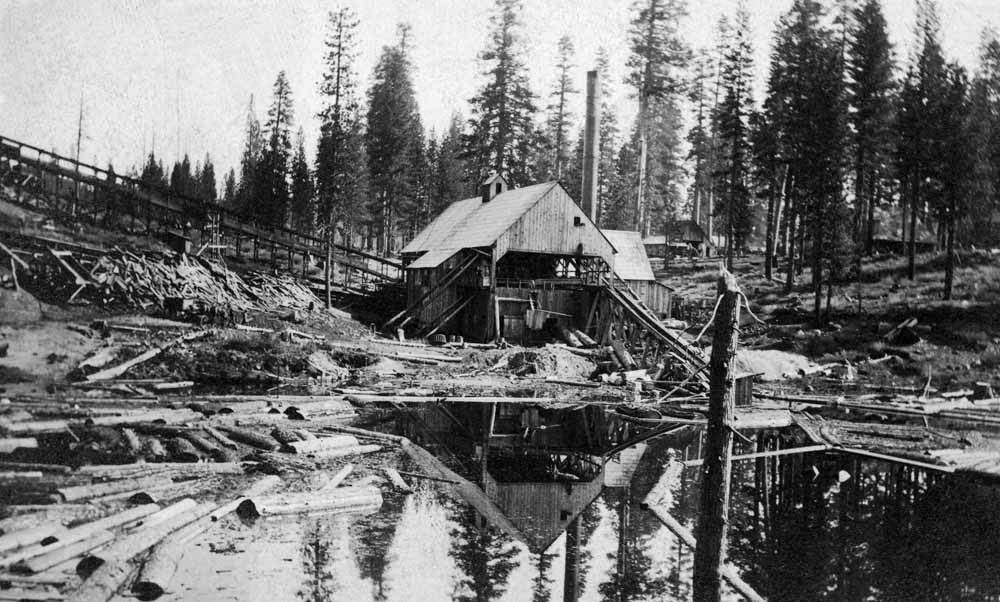 |
|
The front of the William Westover/Bridgeford-Cunningham mill at Algomah. Jeff Moore collection.
|
Photos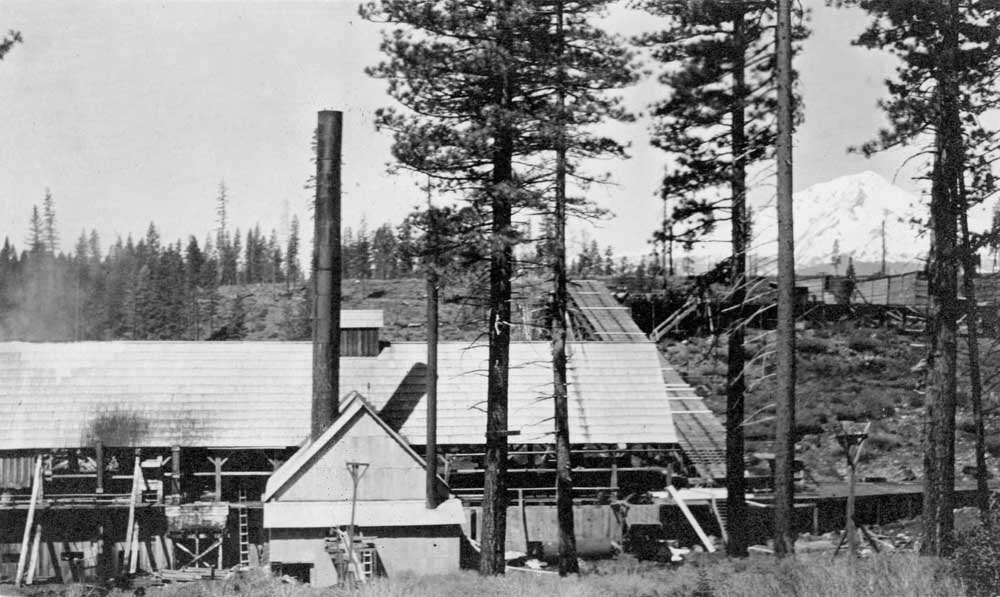 |
|
An early postcard side view of the William Westover/Bridgeford-Cunningham mill at Algomah. Jeff Moore collection.
|
Photos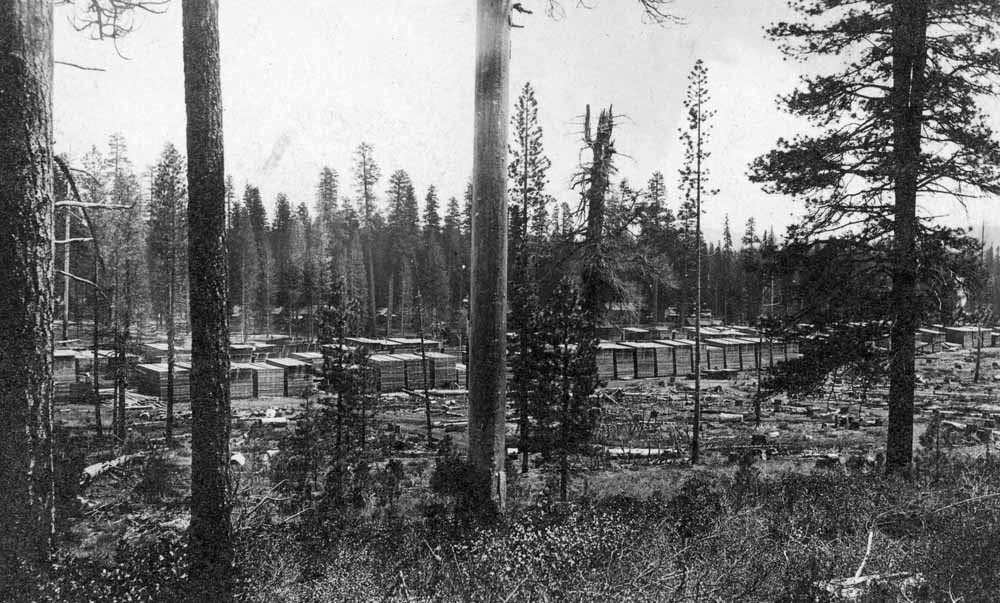 |
|
The William Westover/Bridgeford-Cunningham lumber yards at Algomah. Jeff Moore collection.
|
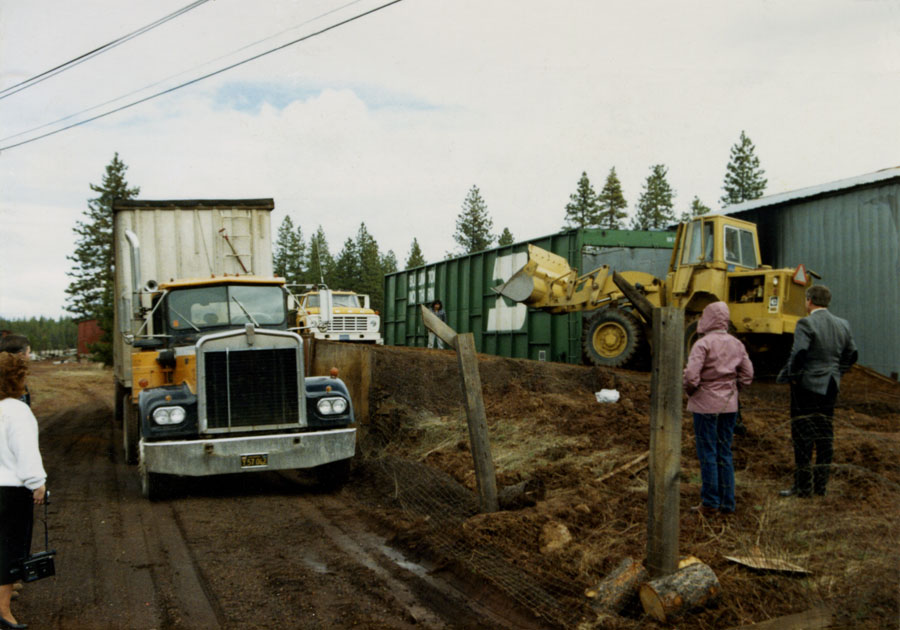 |
|
McCloud River Railroad and Ultrapower officials watch as one of the first loads of hog fuel is unloaded in the Burney yard.
|
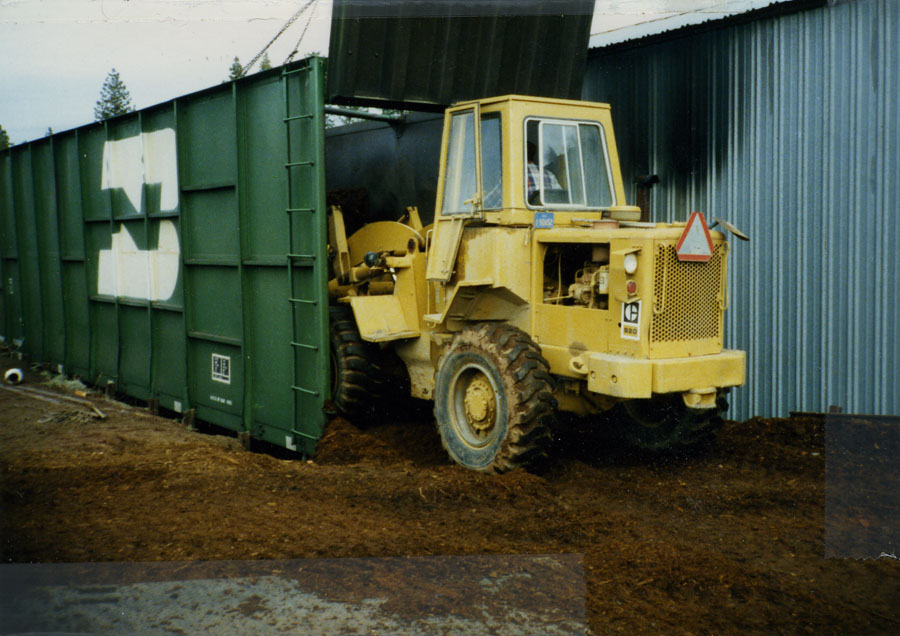 |
|
The loader scooping hog fuel out of a woodchip hopper.
|
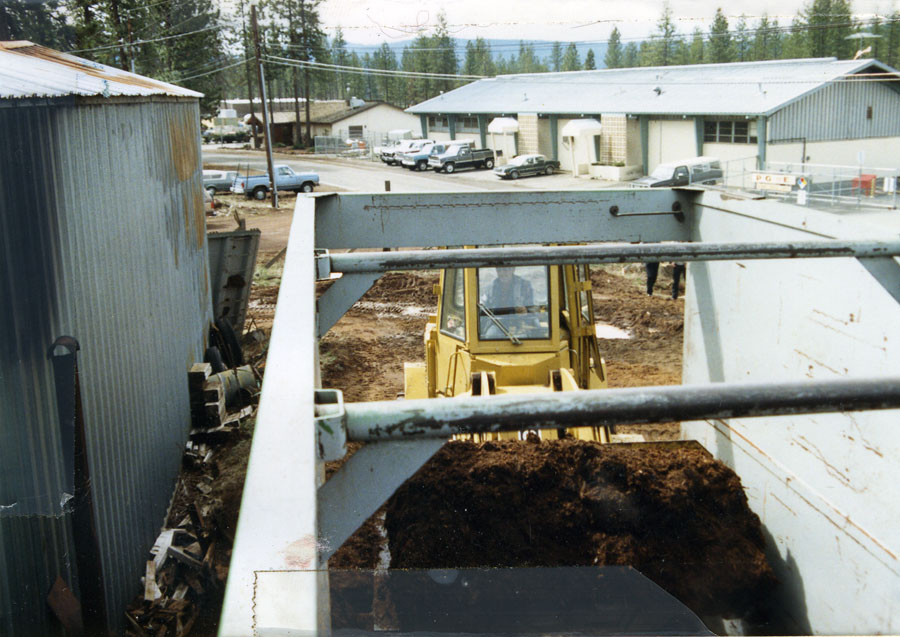 |
|
Top view of the unloading process.
|
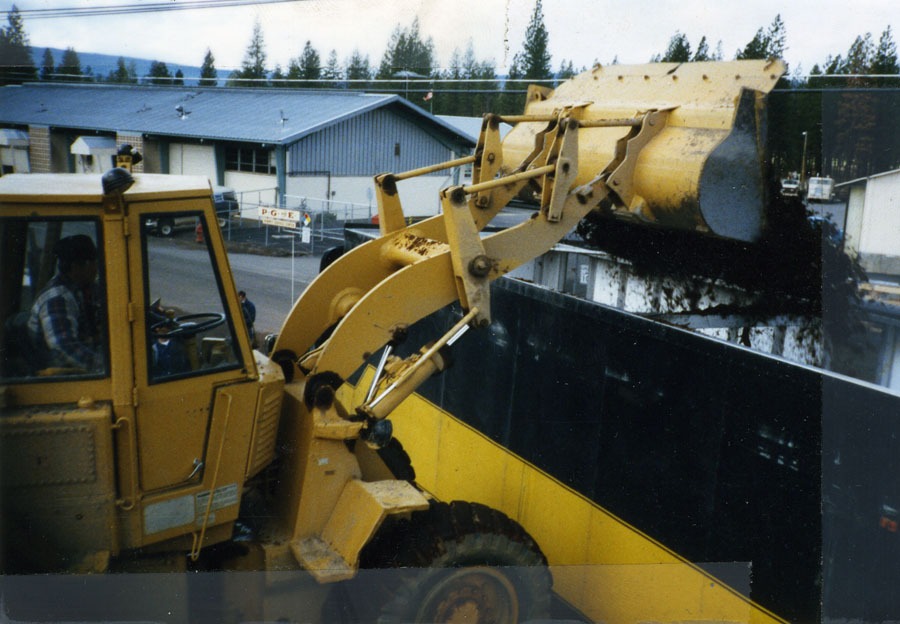 |
|
Dumping the fuel into the chip truck.
|
|
|